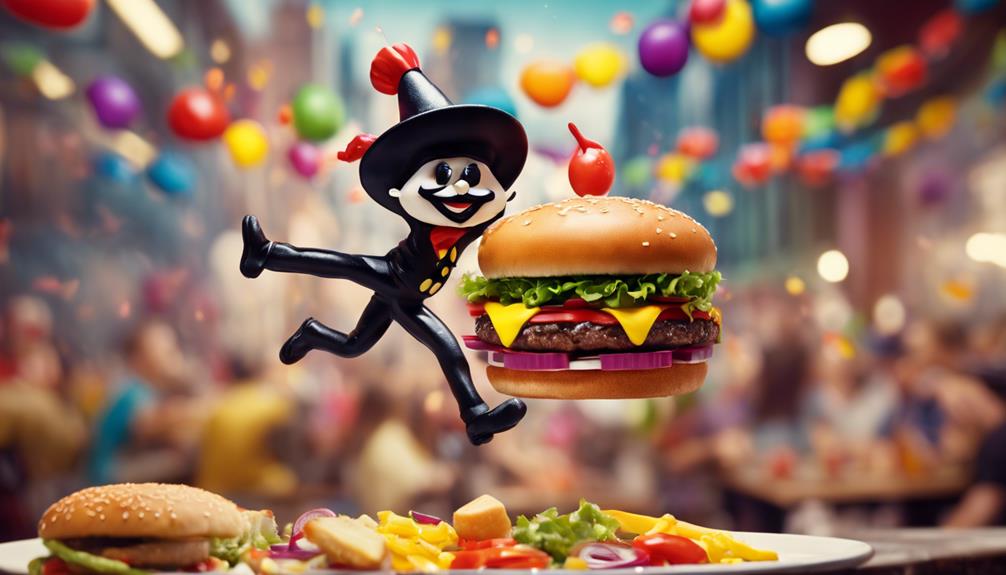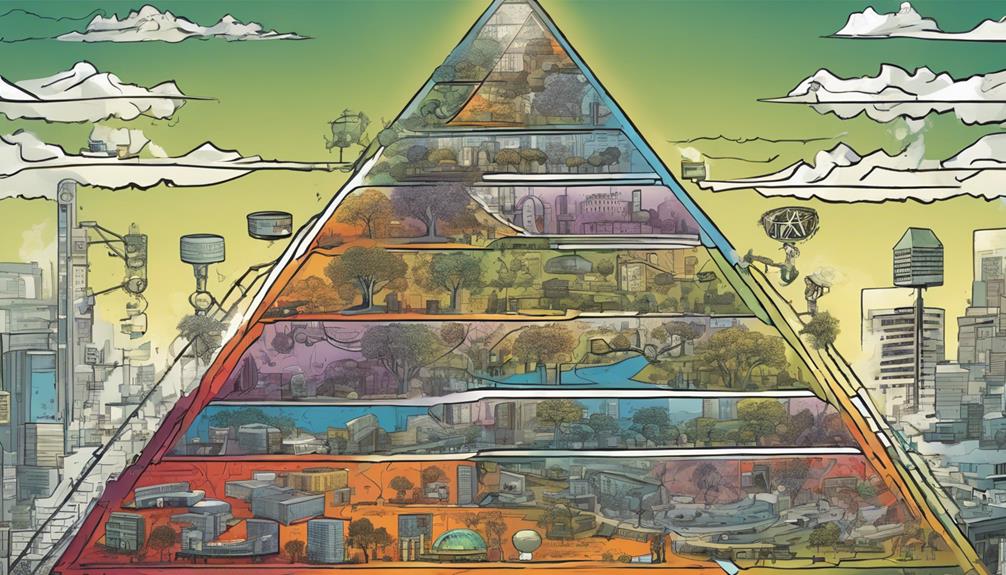The Hamburglar's nostalgic return has sparked excitement for McDonald's revamped burger lineup. This campaign features vibrant commercials showcasing the iconic character stealing enhanced burgers, emphasizing McDonald's commitment to quality and innovation. The new offerings include softer buns, melted cheese, and flavorful toppings like caramelized onions and extra Big Mac sauce. This marketing strategy aims to connect with longtime fans while attracting a younger audience curious about the brand's legacy. As McDonald's adapts to market demands and competition, the Hamburglar's revival signals a broader commitment to delivering a satisfying burger experience. Discover what else this campaign has to offer.
Key Takeaways
- The nostalgic return of the Hamburglar energizes McDonald's ad campaign, promoting their revamped burger offerings.
- Two vibrant commercials feature the Hamburglar stealing new, high-quality burgers, highlighting McDonald's innovation.
- Revamped burgers now include softer buns, melted cheese, and caramelized onions for enhanced flavor.
- The campaign aims to engage both long-time fans and younger customers curious about the brand's history.
Hamburglar Ad Campaign
The Hamburglar's nostalgic return is set to ignite excitement as he steals the spotlight in McDonald's latest ad campaign promoting revamped burger offerings. Fans of the iconic fast food thief will be thrilled to see the Hamburglar making a comeback after several years away from the limelight. McDonald’s is hoping that his return will not only spark interest in their new menu items, but also tap into the nostalgia of a generation who grew up with the character. The company is banking on the fact that the Hamburglar’s return will create a marketing frenzy akin to the dahmer tourism craze, drawing in curious customers eager to rekindle their love for the mischievous burger bandit. However, not everyone is thrilled about the Hamburglar’s nostalgic return. In fact, the Milwaukee bar decries the marketing frenzy surrounding the beloved character, citing concerns about glorifying a criminal figure. Despite the controversy, McDonald’s is confident that the Hamburglar’s reappearance will generate buzz and drive sales, appealing to both new and existing customers alike. As the ad campaign gains momentum, it remains to be seen whether the Hamburglar’s comeback will stand the test of time or fade into obscurity once again.
In two vibrant commercials, the mischievous character dons his iconic cape and prison stripes, creating a playful atmosphere that draws viewers in.
The Hamburglar is portrayed stealing refreshed burgers from McDonald's, showcasing the brand's commitment to quality and innovation.
This campaign not only highlights the new burger lineup but also aligns with McDonald's corporate restructuring efforts.
By reintroducing a beloved figure, McDonald's aims to engage both longtime fans and new customers, leveraging nostalgia to create a buzz around its updated menu items.
The Hamburglar's antics promise to capture attention and boost interest in the restaurant's offerings.
Burger Modifications

Revamped burger offerings feature softer toasted buns and melted cheese, enhancing the overall flavor experience at McDonald's.
The new menu includes caramelized white onions and an extra helping of Big Mac sauce, catering to the evolving tastes of customers.
Chef Chad Schafer highlights that process adjustments guarantee the cheese melts perfectly, creating a gooey delight that customers crave.
These modifications have been tested in markets like Australia, Canada, and Belgium, receiving positive feedback.
The aim is to elevate the burger experience, making each bite more satisfying.
As the fast food industry adapts to customer demands, McDonald's demonstrates its commitment to quality and flavor, setting the stage for increased excitement around its beloved burgers.
Corporate Restructuring

Amidst the excitement of new burger offerings, McDonald's has implemented significant corporate restructuring, which included laying off hundreds of employees and cutting pay and benefits for those who remain.
This restructuring reflects a strategic shift in the company's operations, aiming to streamline processes and enhance efficiency. The closure of several field offices further underscores McDonald's commitment to adapting to current market demands.
While these changes might seem drastic, they align with McDonald's broader goals of innovation and competitiveness in the fast-food industry. By reallocating resources and focusing on core operations, McDonald's aims to position itself for future growth, especially as it launches its new burger campaign featuring the beloved Hamburglar.
Marketing Insights

Utilizing the nostalgic appeal of the Hamburglar, McDonald's aims to create a buzz around its revamped burger offerings.
Tariq Hassan, the company's Chief Marketing Officer, emphasizes the campaign's effectiveness by leveraging this iconic character to connect with customers. By tapping into nostalgia, McDonald's not only engages its long-time fans but also attracts a younger audience curious about the brand's history.
The marketing strategy aligns with current trends in fast food advertising, focusing on storytelling to deepen customer engagement. This approach enhances the brand image and highlights the quality of the new burgers.
Industry Context

The return of the Hamburglar comes at a time when fast food menus are evolving to meet changing consumer preferences and expectations.
McDonald's recent changes reflect a broader industry trend toward enhancing menu quality and flavor. As competition heats up among fast food chains, companies recognize the need to innovate to attract and retain customers.
There's an increasing demand for fresh ingredients and unique flavors, prompting brands to rethink their offerings. This shift aims to enhance customer experience and satisfaction, which has become essential in today's market.
By leveraging nostalgia through familiar characters like the Hamburglar, McDonald's can tap into consumers' emotions while aligning with current trends in fast food advertising.
These strategic moves signal a commitment to staying relevant in a competitive landscape.
Conclusion
As McDonald's reintroduces the Hamburglar, the fast-food giant aims to spark excitement around its revamped burger offerings.
This nostalgic character, emblematic of playful mischief, may just be the key to reconnecting with loyal customers.
By enhancing their burgers with quality ingredients and a touch of whimsy, McDonald's could effectively counteract the challenges posed by corporate restructuring.
In embracing the past, they're not only revitalizing their menu but also reinforcing a sense of community among burger lovers.









